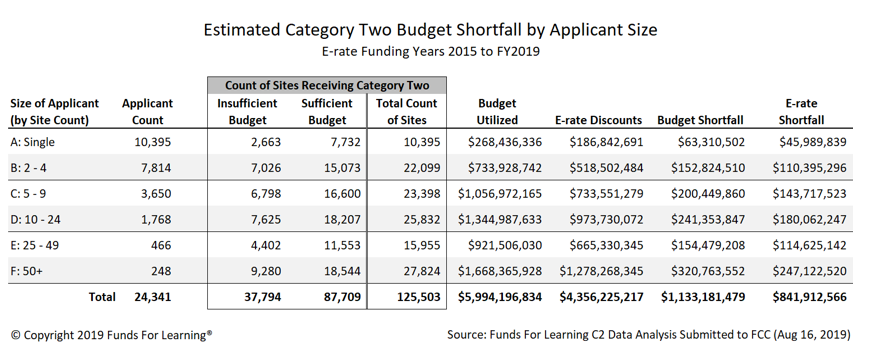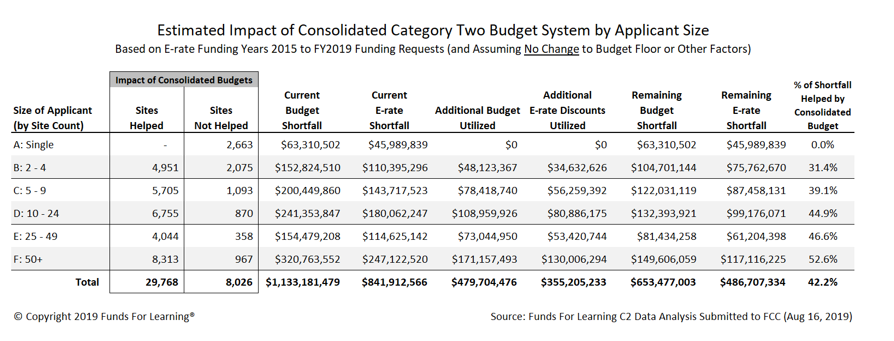To address this need, one of the ideas being discussed is to allow school and library systems with multiple locations the freedom to transfer their C2 budget balances between sites. This is called the consolidated budget approach. The logic goes something like this: If it is less expensive to add Wi-Fi in one building and there is a balance of available discounts than those funds can be applied to a Wi-Fi project at a different, more expensive site. Overall, this would free up millions of dollars of support and provide local decision makers additional freedom and flexibility to help schools and libraries that need support the most. Funds For Learning is a strong advocate for this approach and we think it is an absolute necessity.
But the consolidated budget system only addresses some of the inequities in the current C2 budget system, and it should not be implemented without other important changes, like increasing the budget calculation factors. A major drawback of the consolidated budget is that it helps school and library systems but does not provide any additional relief to individual applicants (i.e. applicants with a site count of one.) The more sites that an applicant has, the more flexibility the consolidated budget brings, and, ultimately, the more helpful it will be. As shown in the following chart, 52.6% of the current budget shortfall would be addressed by using consolidated budgets for applicants with 50 or more sites. Smaller applicants see a lower rate of support. For applicants with 2 to 4 sites, the consolidated budget system would address an estimated 31.4% of their current funding shortfall. And, of course, for single sites consolidated budgets would help 0%.



